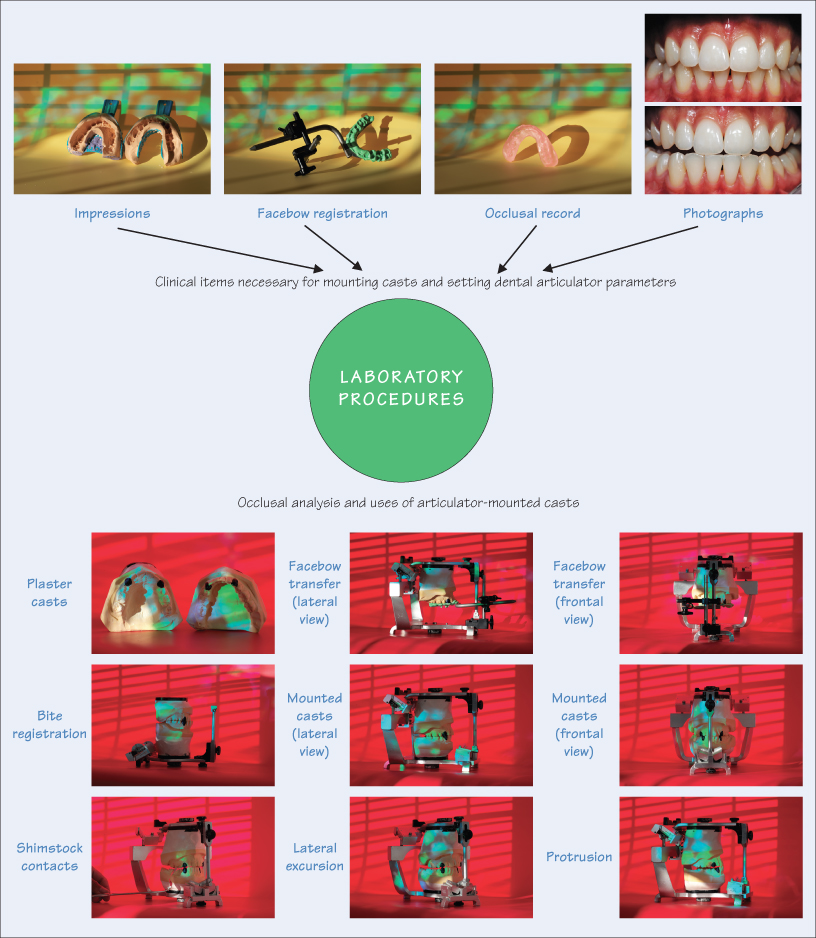16
Occlusion: Laboratory Procedures

The laboratory process involves mounting casts onto a simulating device for reproducing, in three spatial planes, the occlusal situation of the patient’s mouth. The degree of sophistication to which this is achieved depends on the chosen type of articulator, and the meticulous steps taken to avoid introducing errors at each stage of the mounting process. As discussed in Chapters 10 and 15, hinge and fixed value articulators assume no semblance to the relationship of the jaws, while fully adjustable types allow a wider range of adjustable values that are more representative of jaw movements. For most prosthodontic treatment, the most popular type of articulator is the semi-adjustable Denar with accompanying earbow type of facebow transfer. In this chapter the Denar articular is described for its use in occlusal analysis and treatment planning.
Pouring Casts
The first stage is pouring casts from the impressions using high-quality, minimum distortion hard plaster. Any aberration of tooth anatomy will seriously distort the clinical scenario, leading to misleading interpretations and incorrect treatment planning.
Maxillary Cast Location
The facebow transfer, with the bite fork, locates the maxillary cast within the articulator to the hinge axis and ensures its orientation to the horizontal plane (external auditory meati or interpupillary line of the patient). The anterior reference pointer, 43 mm above the maxillary lateral incisor, ensures that the reference plane is adjusted accordingly.
Mandibular Cast Location
The mandibular cast is located to the maxillary cast in either CO or CR, at the chos/>
Stay updated, free dental videos. Join our Telegram channel

VIDEdental - Online dental courses


